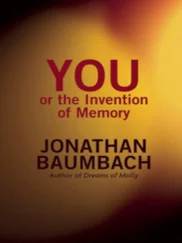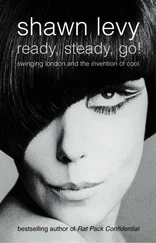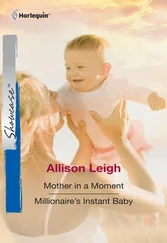2015
From studying the CleftKids’ posts on their LikeMe page, Luke learned they were like an alumni club: bound by a shared past but occupied by the present, only occasionally referring to the thing—accelerated gestation—that had brought them together. When it did come up, Luke snapped to full attention, his heart rate rose, he studied and restudied their posts. One member in particular, he noticed, broached the subject most often: Vivian Bourne, a sophomore at Oceanside High in Newport Beach, California. Of the CleftKids who frequented the group, Vivian, a.k.a. VivversOC, was Luke’s favorite. Even through the sloppy, abbreviation- and emoji-riddled chat of the group, Luke could tell she was the smartest of the batch. The most confident. He ran a quick data scrape on her and found that she was an honors student, played lacrosse, liked to surf, and was hoping to attend Weldon College, the prestigious all-women’s school outside Boston.
VivversOC had written Luke’s favorite CleftKids post:
I’ll show u mine if u show me yrs #cleftpride.
Below was a picture of the top of her head, parted and lit strategically to reveal the irregularity at the crown. Luke had to squint to make it out, but there it was: a three-inch dent running lengthwise, perfectly centered as if marking the head into two equal lobes. Shortly, ten other postings with scalp photos went up.
VivversOC: That feels kinda good, right? No one but my parents + docs have evr seen mine. Like a little secret u don’t want.
LindsEE! (Lindsey Wyatt, 16, Melbourne, FL): What about ur boyfriend?
VivversOC: Don’t have bf
Xavey (Xavier Hartley, 17, Lowell, MA): Now u do, babe. [lip emoji]
VivversOC: In your dreams dude.
LindsEE!: when my bf noticed I told him it was a scar from surgery I had as a kid
Stoph1 (Christopher Dunn, 16, Chicago): what like brain surgery?
LindsEE!: he didn’t even ask lol
VivversOC: omg, how incurious. What abt when u get a haircut? Don’t u think they notice?
Xavey: I buzz my own hair yo.
Stoph1: I goto supercuts and skip the shampoo lol
LindsEE!: hair peeps notice 4 sure. Its just too awk to mention
VivversOC: that’s what I think.
Luke printed out Vivian Bourne’s photo and hung it over his desk.
With Reed’s money, he formed a new company, his “biotech incubator,” ZimLabz. He situated it in Daly City, away from the startup-swarmed suburbia of the peninsula. He kept his former workspace in the Mission, though, a converted garage he’d been using for years, for when he needed privacy.
ZimLabz mission statement: to transcend imperfections across the human experience, via intersections of technology and the natural sciences.
Intersection no. 1: Targeted Embryonic Acceleration Technology. TEAT.
Now Luke just needed the talent to make it happen. He hired a headhunter to start building his team. Despite Luke’s own spotty entrepreneurial record, Reed’s network had been so vast and deep, and his reputation so dazzling, that almost no one turned down a meeting with his son. Luke got a green light to visit the Mayo Clinic.
With the help of his headhunter, Luke poached best-of-the-best talent. First, he brought on his reprogeneticist—Roger Milford, of the Mayo Clinic, recent winner of a prestigious Lasker Prize. Then Kenzo Akabe, the stem cell biologist who’d first created embryos from human skin cells in Japan, came on as a consultant. Rita Gupta from UCSF, the obstetrician from the team responsible for the first successful artificial womb. She had been a particularly tough hire, strongly opposed to the idea of the nine-week pregnancy when he’d first met with her.
“It’s an unsound concept,” she’d told him. “Women need nine months to prepare for the profound changes a baby brings.”
“But how can they really prepare,” Luke asked, “when the child is still in utero? How long does it take to set up a nursery?”
Gupta had laughed with disbelief. “I don’t mean logistically , Mr. Zimmerman. I mean psycho-emotionally. Even hormonally. A lot of necessary internal changes happen during pregnancy, and they happen gradually. For a reason.”
“I respect that,” Luke had said. “But perhaps you’d be open to talking with my new clinical chief, Roger Milford?”
“What?” Gupta seemed suddenly sharper, more tuned-in. “Roger Milford is working for you?”
“Starts a week from Monday,” Luke had said.
Soon, Gupta joined his staff too.
In addition, Luke had needed research assistants and lab techs, finance people and legal wizards. Handlers and veterinarians for the animal trials.
In order to recruit, he’d needed to discuss the origin of his source material, the tissue samples he’d taken from Config Labs and preserved pristinely in deep freeze. Voluntary donations, he’d explained, riffing on actual historical events, contributed by AG mothers and children. He’d even located a document forger in Russia who provided him with an array of beautiful consent forms “completed” by every legal adult who’d donated her and her child’s tissue to Luke’s project, thereby authorizing him to “utilize the material for any purpose directly supporting human advancement.”
It took years to get the team in place, to lure each new person away from a fabulous job, negotiate extravagant compensation packages, assist with relocation, complete stacks of nondisclosure and noncompete agreements. Luke’s lawyers worked around the clock. His list of enemies lengthened as ZimLabz recruited top talent away from legendary institutions. The director of the Lincoln Laboratory at MIT referred to Luke as a shameless poacher of human capital, seemingly bent on exploiting his father’s legacy , and Google’s moonshot factory filed a lawsuit against him, claiming “tortious interference,” which Luke’s lawyers assured him would go nowhere. He was not worried. Every step he’d taken to build ZimLabz was absolutely necessary. Ruffling a few feathers along the way was inevitable.
When it was done, Luke paid his headhunter an astronomical commission and sent him on his way. There was still one more person to recruit to the team, but Luke wanted to handle it himself.
2019
Peter had gone trekking in Nepal alone. He’d strongly wanted Tessa to accompany him on the Himalayan adventure, but she was working fifteen-hour days preparing to launch Seahorse, and still had one foot in Loop Industries. She couldn’t afford to be away until after the opening bell clanged on Wall Street and the company began trading. Declining Peter’s invitation to Nepal had triggered a healthy dose of the g-word in Tessa, but the timing could not have been worse for her to be on the opposite side of the globe. Probably with altitude sickness.
Two nights after Peter left on his trip, Tessa had gone to a networking event in San Francisco, a shmoozefest thrown in celebration of a new company vowing to disrupt the beauty industry with AI-infused, ultralifelike robotic fashion models. Such events in the tech scene were often preciously quirky, and this one had been no exception. Held in a soaring barnlike space in the Mission, it featured small-batch bourbon and unidentifiable pickled things on trays, served by gorgeous “women”—actually bots covered in “skin” made from whipped latex and silicon—who moved through the crowd on “smart” roller skates.
Читать дальше












